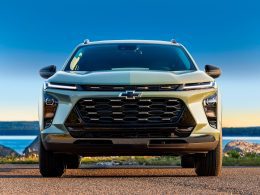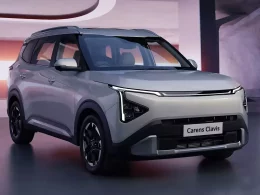Autonomous driving technology has come a long way in the past decade, and its potential to revolutionize the way we travel is becoming more apparent. In this article, we’ll take a look at the latest advancements in autonomous driving technology and how they could shape the future of cars.
One of the most significant developments in autonomous driving technology is the use of artificial intelligence (AI) and machine learning. These technologies allow vehicles to analyze and process vast amounts of data from sensors, cameras, and other sources, enabling them to make more informed decisions on the road.
For example, Tesla’s Autopilot system uses advanced AI algorithms to recognize and respond to road conditions in real-time. The system can detect obstacles, pedestrians, and other vehicles and adjust its speed and trajectory accordingly. Additionally, Autopilot relies on a fleet learning approach, where data collected from Tesla vehicles is shared and analyzed to improve the performance of the system over time.
Another key area of development in autonomous driving technology is the use of lidar (light detection and ranging) sensors. Lidar sensors emit laser beams and measure the time it takes for the beam to bounce back, creating a 3D map of the vehicle’s surroundings. Lidar technology can provide more detailed and accurate information than traditional cameras and radar sensors, making it an essential tool for autonomous vehicles.
Several companies, including Waymo and Aurora, are using lidar technology in their autonomous driving systems. Waymo, which is owned by Alphabet Inc. (Google’s parent company), has been testing autonomous vehicles on public roads since 2009 and has logged over 20 million miles of autonomous driving experience. The company’s vehicles use a combination of lidar, radar, and cameras to navigate the road safely.
Despite these advancements, there are still many challenges to overcome before fully autonomous vehicles become a reality. One of the most significant obstacles is developing a reliable and secure communication system between vehicles and the infrastructure around them.
This communication system, known as vehicle-to-everything (V2X), allows vehicles to exchange information with traffic signals, road signs, and other vehicles in real-time. V2X technology can alert drivers to potential hazards ahead, such as an accident or a pedestrian crossing, and help them make informed decisions.
Several automakers, including Ford, General Motors, and Toyota, are investing in V2X technology, with the aim of integrating it into their vehicles in the near future.
Another challenge facing autonomous driving technology is public acceptance. A recent survey found that over half of Americans (55%) were skeptical of autonomous vehicles, with concerns about safety, privacy, and job displacement being the primary reasons.
To address these concerns, autonomous driving technology companies need to be transparent about their technology’s capabilities and limitations, as well as the safety measures they have in place. Companies also need to work with regulators and lawmakers to establish clear guidelines for autonomous vehicle testing and deployment.
In conclusion, the future of cars is rapidly changing, and autonomous driving technology is playing a significant role in that transformation. While there are still challenges to overcome, the potential benefits of autonomous vehicles, such as reduced traffic congestion, improved safety, and increased mobility for people with disabilities, make it an exciting area to watch.











